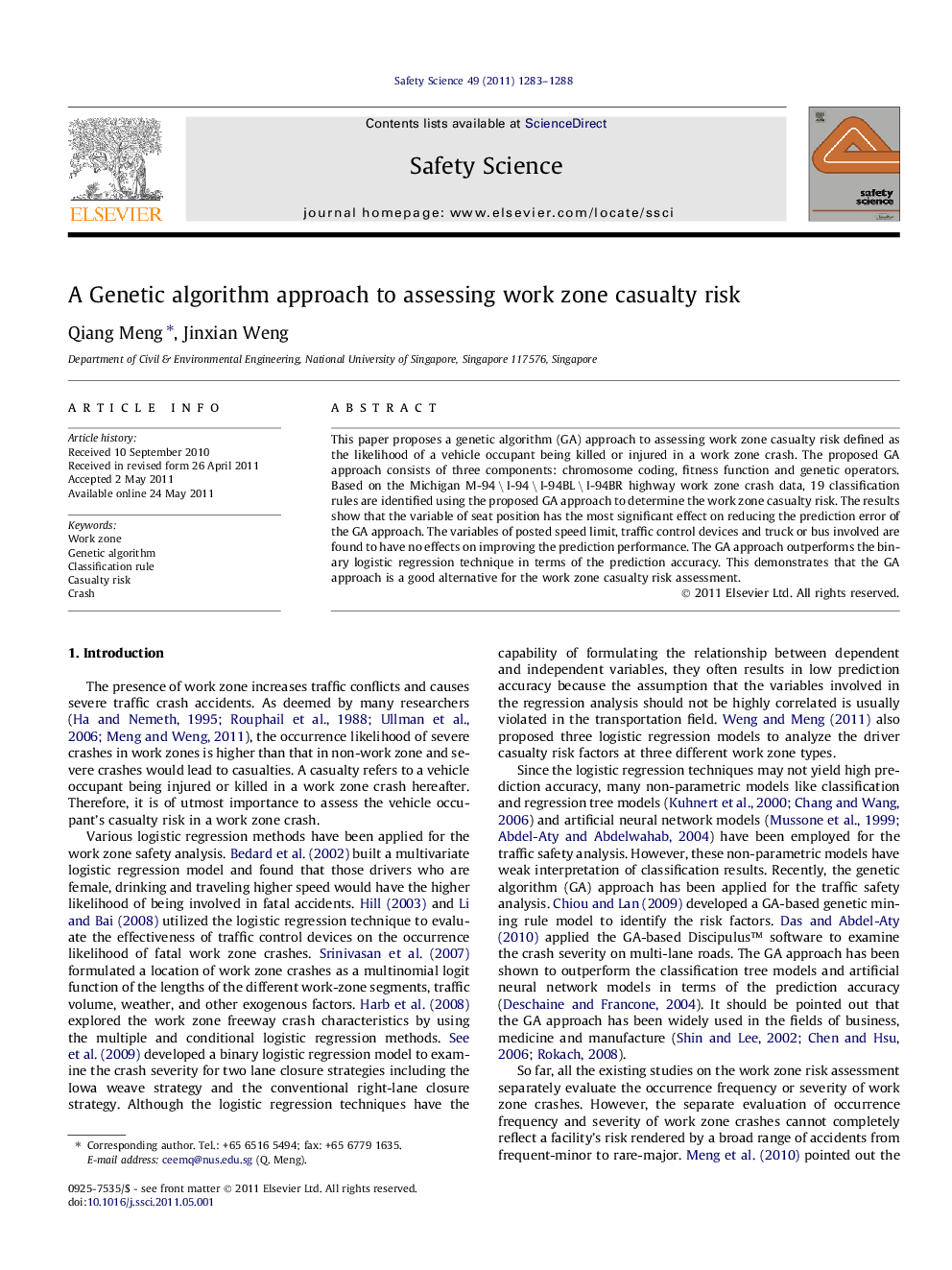| Article ID | Journal | Published Year | Pages | File Type |
|---|---|---|---|---|
| 589881 | Safety Science | 2011 | 6 Pages |
This paper proposes a genetic algorithm (GA) approach to assessing work zone casualty risk defined as the likelihood of a vehicle occupant being killed or injured in a work zone crash. The proposed GA approach consists of three components: chromosome coding, fitness function and genetic operators. Based on the Michigan M-94⧹I-94⧹I-94BL⧹I-94BRM-94⧹I-94⧹I-94BL⧹I-94BR highway work zone crash data, 19 classification rules are identified using the proposed GA approach to determine the work zone casualty risk. The results show that the variable of seat position has the most significant effect on reducing the prediction error of the GA approach. The variables of posted speed limit, traffic control devices and truck or bus involved are found to have no effects on improving the prediction performance. The GA approach outperforms the binary logistic regression technique in terms of the prediction accuracy. This demonstrates that the GA approach is a good alternative for the work zone casualty risk assessment.
► A novel genetic algorithm (GA) approach is proposed to assess work zone casualty risk. ► 19 classification rules are identified using the proposed GA approach to determine the work zone casualty risk. ► The seat position has the most significant effect on reducing the prediction error. ► The posted speed limit, traffic control devices and truck or bus involved have no effects on improving the prediction performance. ► The GA approach outperforms the logistic regression technique in terms of the prediction accuracy.
